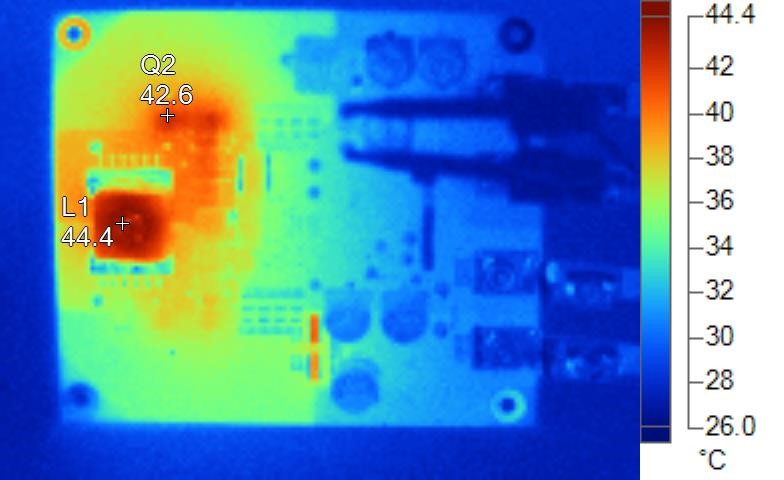TIDT262 April 2022
- Description
- Features
- Applications
- 1Test Prerequisites
-
2Testing and
Results
- 2.1 Efficiency Graphs
- 2.2 Load Regulation
- 2.3 Line Regulation
- 2.4
Thermal Images
- 2.4.1
Further Extensive Thermal
Measurements
- 2.4.1.1
No Forced Cooling
- 2.4.1.1.1 Thermal Images 4.5 VIN and 20 AOUT
- 2.4.1.1.2 Thermal Image 5.5 VIN and 20 AOUT
- 2.4.1.1.3 Thermal Image 7 VIN and 25 AOUT
- 2.4.1.1.4 Thermal Image 9 VIN and 30 AOUT
- 2.4.1.1.5 Thermal Image 12 VIN and 30 AOUT
- 2.4.1.1.6 Thermal Image 15 VIN and 30 AOUT
- 2.4.1.1.7 Thermal Image 13.8 VIN and 30 AOUT
- 2.4.1.2 Forced Cooling
- 2.4.1.1
No Forced Cooling
- 2.4.1
Further Extensive Thermal
Measurements
- 2.5 Bode Plots
- 3Waveforms
2.4.1.2.6 Thermal Image 15 VIN and 30 AOUT

Nominal operation in buck mode or
transition mode shows a temperature rise around +20°K by forced cooling.
Figure 2-23 15 VIN, 30
AOUT, Continuous Operation| Name | Temperature |
|---|---|
|
L1 |
44.4°C |
|
Q2 |
42.6°C |